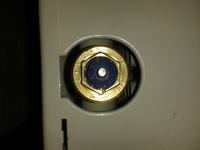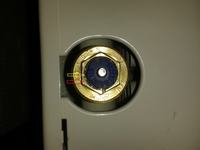Hello everyone.
The heating season has begun, and the question is. Well, I took off the thermostatic head at home, I wanted to check how the pre-valve is set and here I have such a pre-adjustment valve.
Please tell me if this valve also has the same rule that the number 8 is the maximum flow and 1 is the minimum, because I turn this valve so that from 1 to about 4 you can hear the flow (water noise) and above 4 to 8 a quiet radiator.

I will immediately add that I live in a block of flats and all valves are initially set to 4, regardless of whether they are closer to the counter on the staircase or further away, should it be like that?
The heating season has begun, and the question is. Well, I took off the thermostatic head at home, I wanted to check how the pre-valve is set and here I have such a pre-adjustment valve.
Please tell me if this valve also has the same rule that the number 8 is the maximum flow and 1 is the minimum, because I turn this valve so that from 1 to about 4 you can hear the flow (water noise) and above 4 to 8 a quiet radiator.

I will immediately add that I live in a block of flats and all valves are initially set to 4, regardless of whether they are closer to the counter on the staircase or further away, should it be like that?



